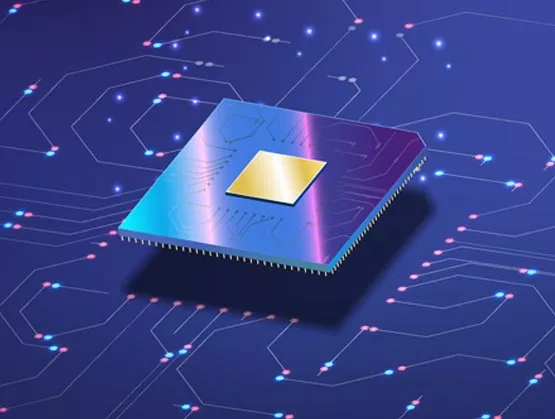
The ESD Alliance member Keysight EDA, formerly Keysight EEsof, is part of Keysight Technologies, a $6 billion provider of design, emulation, and test solutions that accelerate innovation to connect and secure the world. The Keysight EDA tool suite includes system simulation, schematic entry, circuit simulation and layout, and device modeling. While the workflow is RF, high-frequency centric, Keysight EDA also provides high-speed digital design, offering a portfolio of design and simulation tools that supports end-to-end design-test workflows.
I recently spoke with Niels Faché, Vice President and General Manager of Keysight’s Design and Simulation Solutions. Our conversation focused on trends in digital twins, system design, and company collaborations.
Smith: Why is EDA tool interoperability such an important topic these days?
Faché: Let’s zoom out for a moment to the product development lifecycle. Generically, it starts with the design and simulation phase where teams go from technical requirements to system architecture and ultimately component-level simulation. This virtual prototyping phase is followed by product implementation and then integration and physical testing and finally manufacturing.
Typically, design teams spend an inordinate amount of time in the physical prototyping phase. There is now a trend towards more up-front design and simulation often referred to as “shift left.” Design teams spend more time up front in virtual prototyping so they can considerably reduce the time fixing errors later in the design cycle. To enable this methodology, design teams are looking for well-connected workflows that incorporate multiple tools from multiple vendors. Our studies show that design teams use from five to 10 tools and usually not from a single vendor, an important statistic to remember as design teams face time-to-market challenges.
 EDA vendors need to determine the tools interface so that designers can share data among various tools. This connectivity between tools in a workflow directly impacts a design team’s ability to quickly bring products to market. Ultimately, the upfront availability of good models and a robust virtual prototype implementation, which some now refer to as a digital twin, will improve performance and help reduce risk in the overall product development lifecycle.
EDA vendors need to determine the tools interface so that designers can share data among various tools. This connectivity between tools in a workflow directly impacts a design team’s ability to quickly bring products to market. Ultimately, the upfront availability of good models and a robust virtual prototype implementation, which some now refer to as a digital twin, will improve performance and help reduce risk in the overall product development lifecycle.
Within that context, design teams are looking for best-in-class tools. EDA companies realize they need to provide standard APIs and data formats so design teams won't waste time managing the data exchange. An open EDA ecosystem throughout the entire flow from design to emulation to test with the ability to interplay between tools gives design teams a total solution.
Smith: That means a need for EDA companies to cooperate. How does a company balance maintaining its competitive edge in an environment where it is cooperating with its competitors?
Faché: Keysight understands that for design teams to have an enterprise flow, we need to collaborate with other companies and emphasize workflow enablement. Typically, EDA companies have an area or piece of the puzzle that they’re good at and focus on that puzzle piece. An open EDA ecosystem will enable design teams to stitch all this together.
Smith: The chip design world has evolved. It used to be the tape out of the chip was everything, and then design teams would be on to the next chip. We’re now designing systems not chips. How does the design automation ecosystem need to evolve to better address system design challenges?
Faché: We both have been part of the conversation around the change from designing against requirements to design for context, which is a fundamental shift in our industry. The former design-against-requirements paradigm when building a subsystem was straightforward – design the requirements and hand it over to a component supplier.
The question now is who is going to operate or perform against those requirements as systems become more complex with many interdependencies and a need for optimal performance. It is important to design within the system context. When a designer works on an RFIC or a radar antenna, for example in an autonomous drive sub-system, they need to understand the context of that component in the overall system. Context has manifested itself in the industry. Look at the automotive value chain and see that component suppliers are now more interested in understanding how they’re chipsets are being used. They may create their own reference designs for different system applications.
 EDA tools need to be able to span those system-level design activities and enable inter-company collaboration where a package or component as an IP block goes into a larger system. A hierarchical approach is needed, for example, where a Tier 1 automotive supplier working on a sub-system can include a component from a component provider. We also see that some of the newer players in the automotive market are entirely vertically integrated because they want to be able to optimize their own system and be able to access all the data generated.
EDA tools need to be able to span those system-level design activities and enable inter-company collaboration where a package or component as an IP block goes into a larger system. A hierarchical approach is needed, for example, where a Tier 1 automotive supplier working on a sub-system can include a component from a component provider. We also see that some of the newer players in the automotive market are entirely vertically integrated because they want to be able to optimize their own system and be able to access all the data generated.
If a company decides to go vertical, it will want to optimize the whole technology stack and that has an implication on the design tools. Point tools will not work well for this approach. What is needed is a hierarchical design approach starting at the system level that proceeds to gradually build, add more models, and more refined models of the sub-systems. They might start with high-level behavioral models and then drill down into individual blocks or components for a more detailed analysis.
This hierarchical methodology ties into the concept of developing a digital twin that becomes a true representation of what is being built. The traditional flow tends to be a linear flow feeding forward. Design teams have a set of requirements for the design, they simulate and then build it. If it doesn't work exactly as expected and the design is not a perfect representation of the specification, the design team reviews simulation results versus the measured data. Design teams want to make sure that whatever they learn from measurements and the physical space is brought back into the virtual domain. They keep updating the modeling to ensure that virtual representation gets better and better over time and becomes a true digital twin.
That has a profound impact on EDA tools with a connected workflow from system to component level. Hierarchical model-based system engineering is key and bringing test data back into the design domain and being able to compare simulated data with test data is an exciting space and an evolution in the EDA world.
Smith: With the shift to system design and digital twins, where are the biggest areas of growth for the design automation industry over the next five years?
Faché: There are many ways to look at it. Any time there is a new technology wave, there is the opportunity for new investments. A good example is the move from 5G to 6G and the different frequency ranges. Different types of signals putting new demands on design, emulation, and test. New tools will be needed to drive growth as new digital and communication standards continue to evolve at a steady pace.
 Another perspective is applications as electronics becomes more pervasive. It’s not just about wireless and wireline communication. Automotive is a significant growth market, as are the Internet of Things and medical applications. We continue to see a broader spectrum of applications.
Another perspective is applications as electronics becomes more pervasive. It’s not just about wireless and wireline communication. Automotive is a significant growth market, as are the Internet of Things and medical applications. We continue to see a broader spectrum of applications.
Another growth area is heterogeneous integration. It used to be that the chip design team worked on the chip and another team worked on the PCB design, each living in its own world with its own tools. Heterogeneous integration means a new type of collaboration where design teams of various system components work together to look at physical and electrical issues in a detailed manner that drives a whole set of new types of simulation. That’s a major growth area. Data analytics is another major growth area.
Smith: Will AI and machine learning play a significant role in the evolution of digital twins for better and faster modeling?
Faché: Indeed. It’s another growth area and plays an important role in our offerings for semiconductor foundry partners that provide both silicon and compound semiconductor (III-V) processes. For example, we are using artificial neural networks in device modeling to speed up the process of analyzing measured data to create robust device models of new technology nodes.
Building a model using the traditional method requires a designer to perform a high volume of measurements. Creating a robust model this way involves fitting the measured data into parameters – a process that can take weeks of manual effort. Applying an artificial neural network to the vast amounts of measured data accelerates fitting the model to parameters and is clearly one way to develop models much faster.
In terms of simulations and optimizing against certain performance objectives, for example, it could be the design of a particular amplifier or filter. Designers run different simulations and have smart ways to select different parameters – AI and ML can help speed up these processes to yield better performance and productivity.
All companies are resource constrained and there are only so many designers and so much time to get products to market. Productivity is absolutely critical. That means tool interoperability, data management, analytics, and AI/ML for automated workflows are needed to make system design teams more productive.
About Niels Faché
 Niels Faché is Vice President and General Manager, Design and Simulation at Keysight EDA. Prior to this, he was Vice President and General Manager of the Remarketing Solutions Division and then the Keysight Services Portfolio Organization.
Niels Faché is Vice President and General Manager, Design and Simulation at Keysight EDA. Prior to this, he was Vice President and General Manager of the Remarketing Solutions Division and then the Keysight Services Portfolio Organization.
Faché holds a master’s degree and Ph.D. in electrical engineering, both from the University of Ghent, Belgium, where he also served as a part-time professor from 1995 to 1997. He has a business degree from the Université Libre de Bruxelles, Belgium, and has completed coursework at the Stanford Center for Professional Development.
Robert (Bob) Smith is executive director of the ESD Alliance, a SEMI Technology Community.